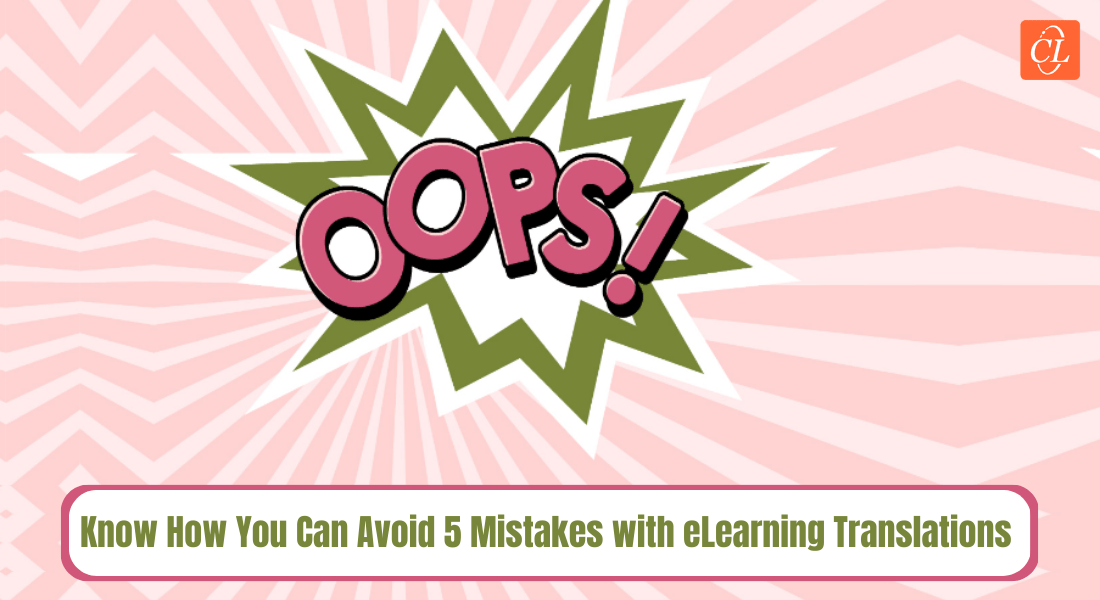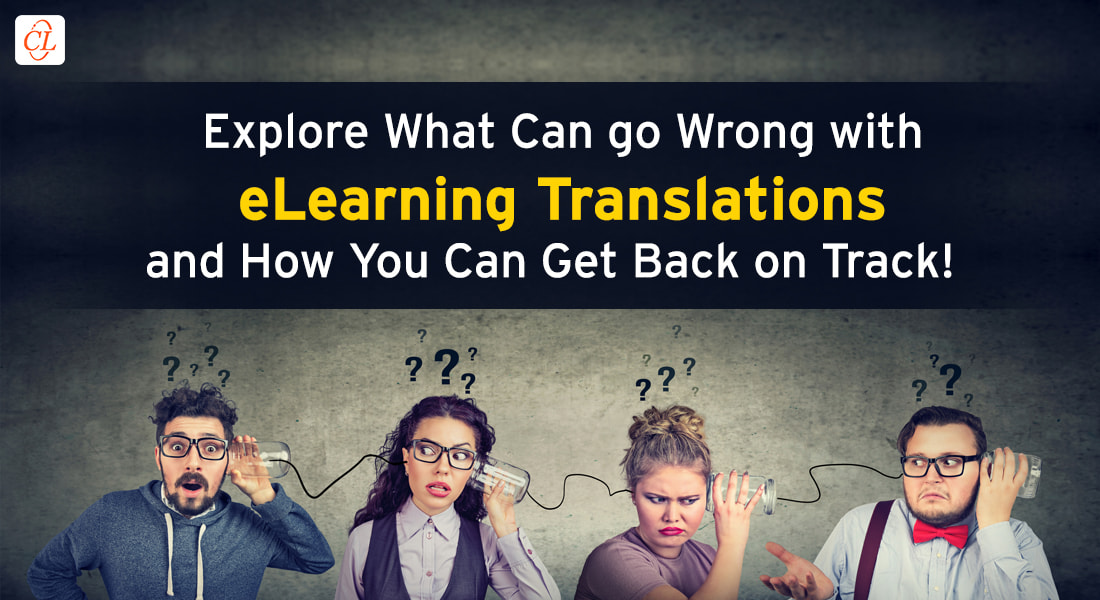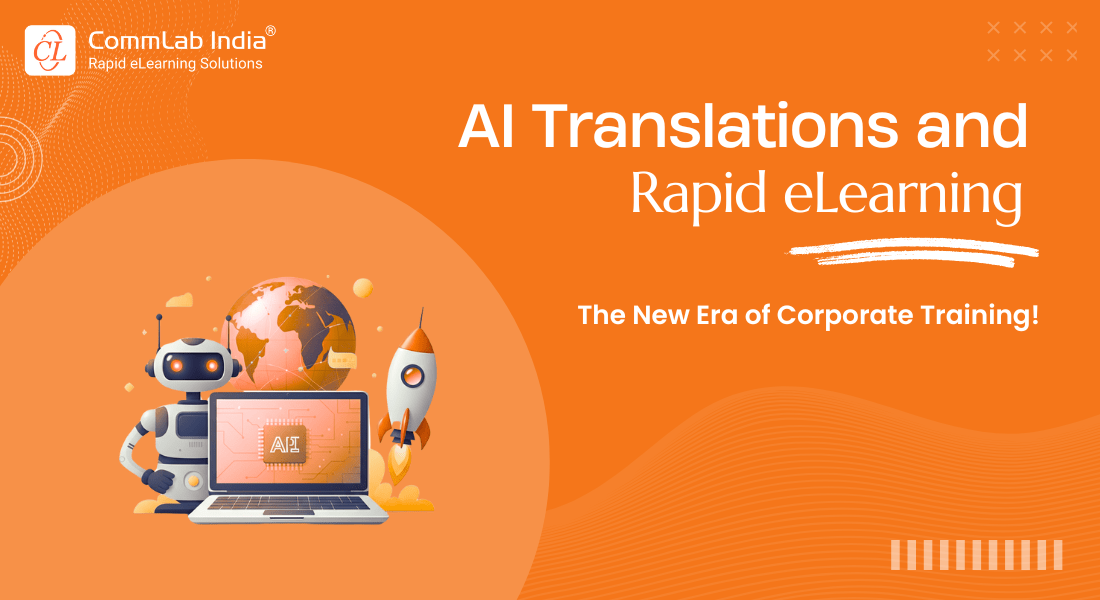5 Mistakes that Are a Big No in eLearning Translations

When it comes to eLearning translations, it’s not just a matter of swapping out one language for another, like a game of online Boggle. It’s more like a game of online Scrabble, where every word counts, and even one mistake, one misplaced letter, can change the whole meaning of the game. But fear not, with the right approach and some clever wordplay, you can design and develop eLearning courses that are not only accurate but also a joy to learn from. So let’s raise the bar on eLearning translations and design training materials that are not only informative but also entertaining and culturally appropriate.
Forewarned is Forearmed!
Here’s a list of 5 mistakes to avoid in eLearning translation:
- Including too many videos and audio
- Not considering outsourcing the eLearning translations
- Not incorporating the native feedback
- Using slangs and cultural-specific components
- Not leveraging the rapid authoring tools
After all, learning should be fun, and with eLearning translations, the world truly is your oyster.
5 Mistakes to Avoid While Translating eLearning Courses
Including Too Many Videos and Audio
Translating the content in videos, particularly when it comes to captions and subtitles, can be a complex and challenging task. The main difficulty lies in the fact that video content often contains a lot of spoken languages, idiomatic expressions, and cultural references that can be difficult to convey in another language. Additionally, the timing and placement of subtitles and captions must be carefully coordinated with the spoken language and on-screen action, making sure that the translation is not only accurate but also easy to follow. Furthermore, the translation needs to be done in a way that fits into the screen and is readable, and not crowding the screen. All these factors make video text translation a demanding task that requires a high level of language proficiency, cultural knowledge, and technical expertise.
Find answers to all your eLearning translation queries here!
Not Considering Outsourcing the eLearning Translations
When it comes to eLearning translations, it’s easy to think that you can handle it all on your own, like a one-man band tackling a symphony. But just as a symphony requires a variety of instruments and skilled musicians, eLearning translations require a team of experts to ensure it’s done right. Outsourcing eLearning translations to professionals can save you time, ensure accuracy, and bring a fresh perspective to your materials. Plus, it’ll free you up to focus on what you do best, like creating engaging content or perfecting your virtual classroom skills. Don’t let the task of eLearning translations weigh you down, bring in the experts and watch your materials soar to new heights.
Not Incorporating the Native Feedback
It’s easy to think that once the words are translated, the job is done. But just like a fine wine, eLearning courses need time to breathe, amazing instructional design strategies to formulate, and feedback from native speakers is the oxygen they need to thrive. Not considering getting native feedback or ignoring the feedback from native speakers is like playing a game of telephone, where a message gets distorted with every person who passes it on.
Incorporating feedback from native speakers ensures that the materials are accurate, culturally appropriate, and easy to understand. It’s like having a team of quality control experts who not only catch any errors but also bring fresh ideas to the table. Don’t leave your eLearning training material to chance, take the time to incorporate native feedback and watch them shine.
Using Slangs and Cultural-specific Components
This component can be a deal maker or deal breaker. Using slang or cultural-specific jargon can be a costly mistake. While it may seem like a way to connect with learners on a more personal level, it can actually have the opposite effect. Using language that is not universally understood can confuse and alienate learners, making it difficult for them to fully engage with the material. Furthermore, slang and jargon are constantly evolving, meaning that the eLearning content may become outdated quickly, which can lead to learners not understanding the material and ultimately leading to lesser retention and productivity.
Additionally, slang and cultural-specific jargon can also be sensitive, meaning that it can offend or hurt some learners, especially if the translation is not done correctly. Therefore, eLearning course designers and developers should avoid using slang or cultural-specific elements in translations and instead opt for clear, universally understood language that is appropriate for learners. This will ensure that your eLearning course content is accessible and engaging for learners of all backgrounds and cultures.
Not Leveraging the Rapid Authoring Tools
In the fast-paced world of eLearning, it can be easy to overlook the importance of accurate, reliable eLearning translations. But you shouldn’t! And rapid authoring tools are a great tool to ensure that. With that said, not leveraging the rapid authoring tools for eLearning translations is a mistake because you might think that this approach can save money. However, it can ultimately lead to a costlier and more time-consuming process, resulting in eLearning translations that aren’t actually effective. They can be inaccurate, culturally inappropriate, or disengaging for learners.
To add to this, you miss out on the amazing features of rapid authoring tools, one being that you can easily import the eLearning course content to MS Word document. This makes sharing the file with your in-house time or your eLearning translations partner much more feasible. Rapid eLearning authoring tools streamline the translation process and ensure that it is accurate, efficient, and effective. By overlooking their potential, you risk missing out on the many benefits they have to offer, including increased engagement, improved performance, and ultimately better results for learners.
Wrapping It Up!
eLearning translations is a crucial aspect of creating accessible and inclusive eLearning training courses. However, it is not as simple as just translating words, it requires cultural adaptation, technical expertise, and a thorough understanding of the learning requirement of the employees. To put your best foot forward in all these components you should avoid mistakes such as not considering cultural differences, not using native speakers, not leveraging rapid authoring tools, etc. Remember, eLearning translations is an investment in the future of eLearning and it’s worth to put in the extra effort to make sure it’s done right. Don’t take shortcuts, take the time to do it right and watch as your eLearning materials become a catalyst for learning and growth among your diverse workforce. Got questions about eLearning translations? Find all the answers in our free eBook now!





